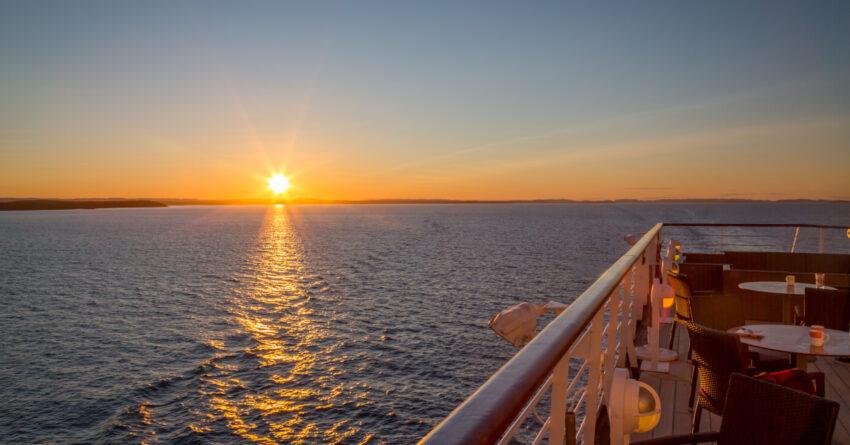As a veteran of more than 40 international cruises, I used to turn up my nose whenever someone suggested that I sail from domestic ports. The only exceptions I ever made were a cruise to Iceland from New York City; a repositioning cruise to Japan that left from Seattle; one to South America that departed from Los Angeles; and two from Miami that sailed to Europe.
I reasoned that, if I was going to kill a night flying from LAX to a departure port and have an after-dinner drink and a Zolpidem tablet after dessert, I could just as easily wake up in Europe, Asia, or Australia as on the east coast of the US. Honestly, you don’t notice the difference—especially if you fly Business or Premium Economy.
After having two international jaunts canceled last year, and considering the possibility of the military crises in Europe broadening before I could sail again, I rethought these views. I booked a Fall Foliage Cruise from NYC to New England, Nova Scotia, Quebec, and Montreal for a client and us. It’s only 12 nights, but with overnight stays in NYC and Montreal, the trip will be nearly the same length as the canceled cruises.

Since we’re traveling on the Seabourn Quest and spending much of the cruise in the French-speaking area of Canada, the food should be as good as on Asian, European, or Australian cruises. Also, we’ll enjoy lobster dinners ashore for the price of a mediocre restaurant meal in Los Angeles.
Not every cruise leaving US ports will be as good as sailing from far-off locations. We have qualms about sailing to the Caribbean in hurricane season or getting packed in with lots of kids on tours in Alaska.
But we also welcome the opportunities offered by the new coastal catamarans owned by American Cruise Lines, with a dozen ships scheduled to start cruising with 109 guests and 50 crew next year. These ships will be able to explore paradises such as the Chesapeake Bay and Puget Sound, which have been, until now, mostly accessible to those who own or can charter an entire vessel.
It may be a long time until Americans return to St. Petersburg, and some—if tensions rise further—might hesitate to take river cruises in Eastern Europe, or visit Hong Kong or Shanghai. Travel advisors should prepare for these eventualities. One of the best ways to do this is to recommend that even die-hard cruisers consider voyages that begin and end in US ports, and suggest that their favorite cruise lines make coastal cruises more widely available.

Dr. Steve Frankel and his wife have cruised on most of the Seabourn, Silversea, Crystal, Azamara, Oceania, Regent, and Windstar ships. He writes a weekly column, Point-to-Point, for Travel Research Online (TRO) that’s read by more than 80,000 travel advisors and industry leaders. Steve is the founder of Cruises & Cameras Travel Services, LLC. He has been recognized as a “2021 Top Travel Specialist” by Conde Nast Traveler magazine and a “Travel Expert Select “by the Signature Travel Network. His specialties are luxury small-ship cruises and COVID-19 safety measures, and has a doctorate in Educational Research with minors in Marketing and Quantitative Business Analysis. He’s also earned a Certificate in Epidemiology from Johns Hopkins University. Previously, he managed qualitative and quantitative research in the private & public sectors. He’s a member of the Los Angeles Press Club, and has written 13 books and hundreds of articles. His email address is steve@cruisesandcameras.com.



